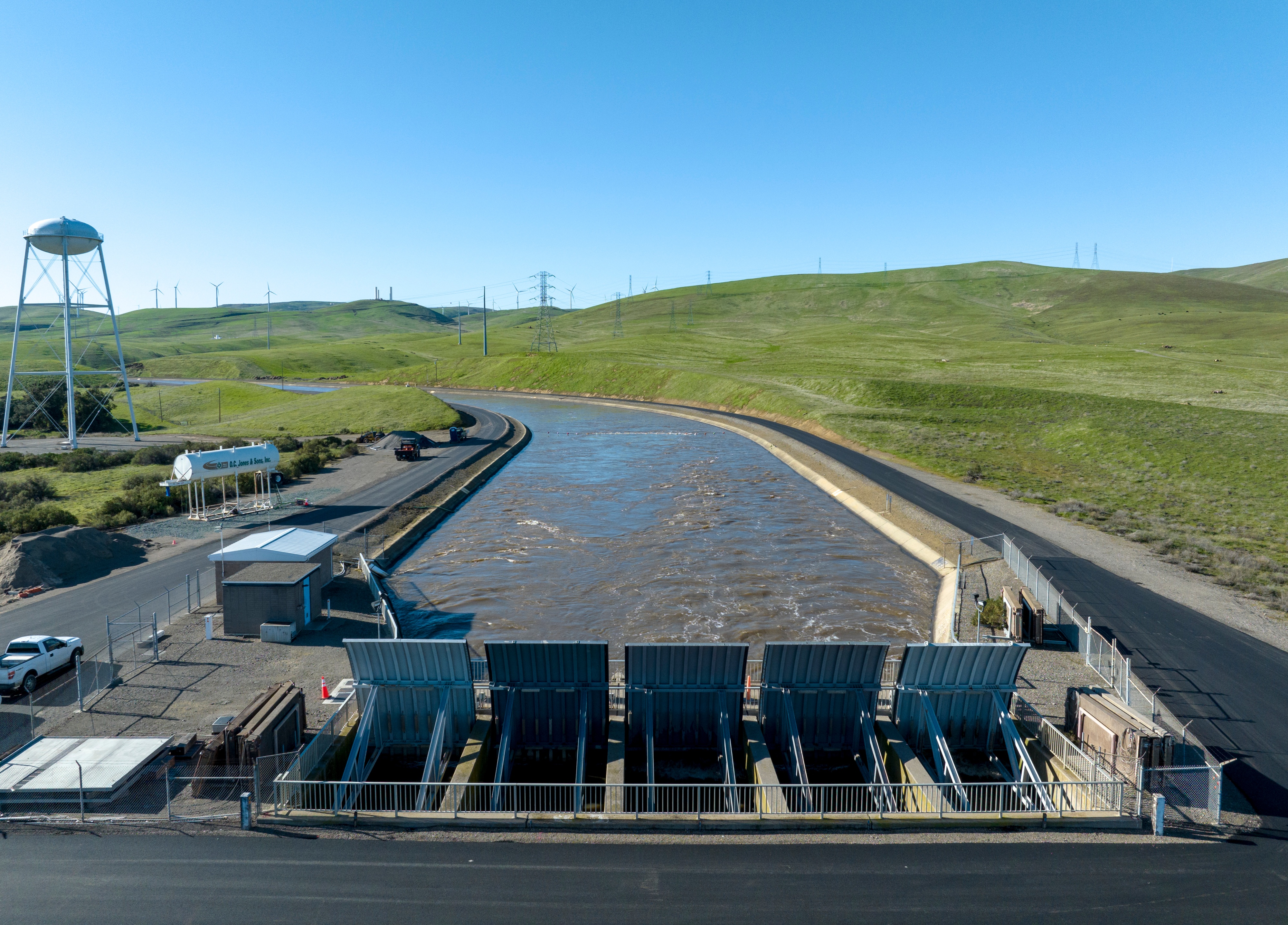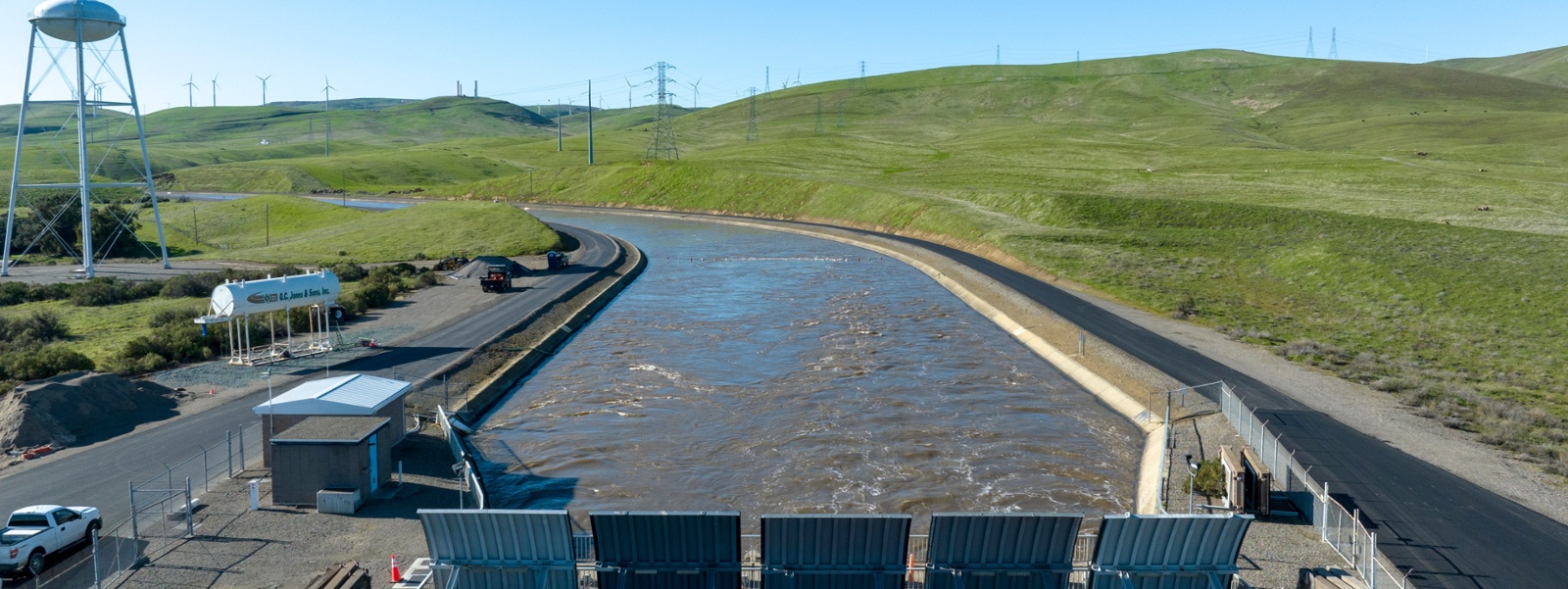Water deliveries may climb to 30% after recent rains


By Christine Souza
Thanks to a series of winter storms that quenched the state in December and early January, the California Department of Water Resources last week announced that the State Water Project may deliver 30% of requested supplies.
The allocation is up from the initial 5% announced in December. It means that some 1.27 million acre-feet of water would be delivered to 29 public water agencies.
The bump in allocation is due to nine atmospheric river storms that helped fill reservoirs and increase the Sierra Nevada snowpack. The SWP’s two largest reservoirs, Lake Oroville and San Luis Reservoir, gained a combined 1.62 million acre-feet of water in storage or roughly enough to provide water to 5.6 million households for a year, DWR reported.
DWR Director Karla Nemeth said the state is pleased to increase the SWP allocation to provide more water to local water agencies. She added that, in the era of dramatic swings of drought and flooding, the storm flows “are badly needed to refill groundwater basins and support recycled water plants.”
“We are adopting more extremes so our allocation process incorporates a discount, if you will, in the event that the observed hydrology is outside of our 82 years of historical observation,” she said during a press conference. “Now, we are very much accounting for outlier years when we do these allocations.”
The lowest initial State Water Project allocation was zero percent on Dec. 1, 2021, with limited water designated only for any unmet human health and safety needs. Last year’s final allocation was 5%, plus water designated for unmet human health and safety needs.
For farmers who depend on water from the SWP, the updated allocation is an improvement over the 5% allocation announced in December. But after three years of drought and limited state water supplies, they would like to see that figure increased even more—because the allocation is still only a third of a normal supply.
“We are hopeful that this (allocation) number will continue to rise,” said Kern County farmer Jenny Holtermann, who grows almonds within boundaries of water districts served by the State Water Project and the federal Central Valley Project.
“Reliance on surface water has been unreliable for so long, it would be welcome to receive an increased allocation,” Holtermann added. “As regulations continue to tighten in the water sector, farming is becoming ever more difficult.”
The updated SWP delivery forecast considers reservoir storage and is based on a conservative runoff forecast, state water officials said, adding that it did not consider the Sierra Nevada snowpack.
DWR conducts snow surveys on Feb. 1, March 1, April 1 and May 1, and that information could lead to a revised allocation as the water supply outlook becomes clearer. The agency said it also intends to gather data from its Airborne Snow Observatory surveys, which offer a more accurate account of California’s snowpack and water supply runoff forecasts.
When asked by reporters whether the state will lift drought emergency curtailment orders, such as for the Russian River watershed, Nemeth said because these counties “have these very flashy events…what we want to be doing in California, irrespective of the state of emergency, is improve the drought resilience of these communities so we could avoid the intensity of the emergency in the first place.”
DWR cautioned that while recent storms have been impressive in improving water-supply conditions, two months remain in the wet season, and California could see a return to warm and dry conditions before April 1.
“We are still early in the season,” Nemeth said. “Make no mistake, we are about 218% of average snowpack for this date. We’re still trending wet, but I think as we can all attest here in California, things have turned dry again, and we want to be cautious as we continue to move through what is traditionally our wet season.”
California Farm Bureau Senior Counsel Chris Scheuring said, “Last year hurt bad, so 30% is great as an opener, but we are of course hoping for those potential deliveries to be revised upwards based upon good luck in the rest of the precipitation season.”
Storing more water during wet years for use in dry years remains critical for the state’s water resiliency future, Scheuring added.
“It is important to get aboveground storage projects like Sites Reservoir and groundwater projects across the finish line,” he said.
(Christine Souza is an assistant editor of Ag Alert. She may be contacted at csouza@cfbf.com.)




